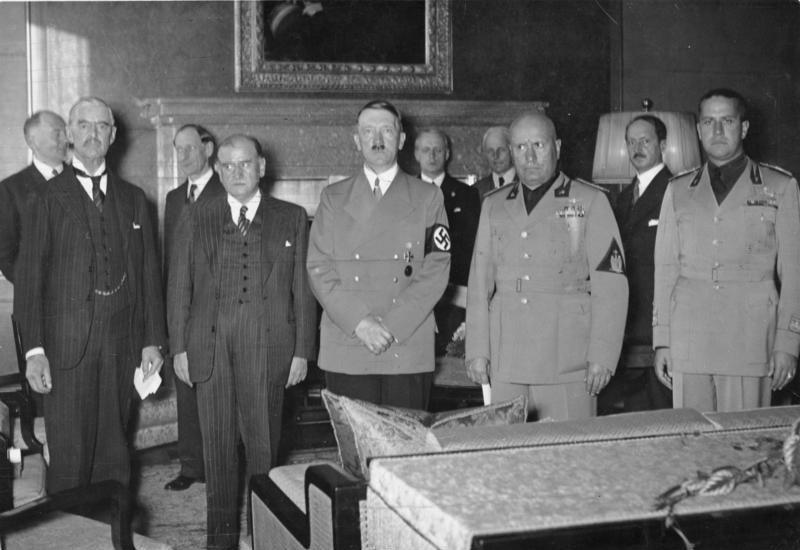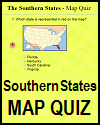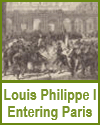Munich Conference, September 29, 1938. Pictured in the front of the photograph are, from left to right: British Prime Minister Neville Chamberlain, French President Édouard Daladier, German Führer Adolf Hitler, Italian "Il Duce" Benito Mussolini, and Italian Foreign Minister (and Mussolini's son-in-law) Galeazzo Graf Ciano. Click here to enlarge.
The Munich Conference of 1938, held on September 29-30 in Munich, Germany, was a crucial diplomatic meeting involving leaders from Germany, Italy, Great Britain, and France. The conference was convened to address the escalating crisis over Adolf Hitler's demands for the Sudetenland, a region of Czechoslovakia with a significant ethnic German population.
The key participants were British Prime Minister Neville Chamberlain, French Premier Édouard Daladier, Italian dictator Benito Mussolini, and German Chancellor Adolf Hitler. Notably, representatives from Czechoslovakia and the Soviet Union were not invited to participate, despite the direct impact of the conference's decisions on Czechoslovakia.
Hitler had been agitating for the annexation of the Sudetenland, claiming that ethnic Germans in the region were being mistreated by the Czechoslovak government. His aggressive demands and the threat of military action created a tense international situation, with the potential for a broader conflict looming.
The Munich Conference aimed to avoid war through appeasement, a policy largely championed by Chamberlain. After intense negotiations, the leaders agreed to the Munich Agreement, which allowed Germany to annex the Sudetenland in exchange for Hitler's promise not to seek further territorial expansion in Europe. Chamberlain famously returned to Britain declaring he had secured "peace for our time."
However, the Munich Agreement is widely regarded as a failed act of appeasement. It not only dismembered Czechoslovakia, undermining its sovereignty and security, but also emboldened Hitler. Within months, he violated the agreement by occupying the rest of Czechoslovakia in March, 1939. The Munich Conference is often cited as a cautionary example of the dangers of appeasing aggressive powers at the expense of smaller nations' security and sovereignty. It highlighted the inability of democratic nations to contain Nazi expansionism and set the stage for the outbreak of World War II in September, 1939.
|















